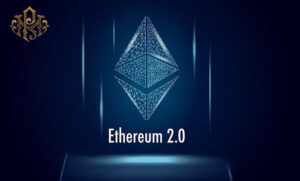
Close



What are the solutions for scaling Ethereum network? As a pioneer in blockchain technology, Ethereum has revolutionized the landscape of decentralized applications and smart contracts. However, as its popularity and adoption has increased, the issue of scalability has emerged as a significant obstacle. In this comprehensive article, we explore the intricacies of scaling the Ethereum network, the challenges it faces, and the innovative solutions being developed to address them.
Scalability is an important aspect of any blockchain network, which refers to its ability to handle an increasing number of transactions and users while maintaining efficiency and performance. In the case of Ethereum, scalability encompasses several dimensions, including transaction throughput, latency, and cost.
The Ethereum network relies on a decentralized network of nodes to validate transactions and execute smart contracts. However, as the volume of transactions increases, the network can become congested, leading to higher fees and slower transaction processing times. As Ethereum’s user base expands and demand for decentralized applications increases, this scalability challenge has become increasingly apparent.
Blockchain scalability is often described in terms of the scalability triad, which suggests that it is challenging to achieve all three key features simultaneously: decentralization, security, and scalability. Ethereum, like other blockchain platforms, must go through this triad to maintain the integrity and efficiency of its network.
Decentralization: Decentralization is a core principle of blockchain technology, which ensures that no single entity or group controls the network. Achieving decentralization requires a distributed network of nodes that participate in transaction validation and consensus mechanisms.
Security: Security is very important in blockchain networks, as any vulnerability or weakness can compromise the integrity of transactions. Strong cryptographic protocols, consensus mechanisms, and network defenses are essential to protect the Ethereum network from attacks.
Scalability: Scalability enables blockchain networks to accommodate growing transaction volumes and user demand without compromising decentralization or security. Achieving scalability includes optimizing network infrastructure, improving consensus mechanisms, and implementing scalable solutions to increase throughput and efficiency.

Ethereum faces several scalability challenges that limit its ability to support mass adoption and meet growing demand:
Network Congestion: With the increasing popularity of Ethereum-based applications and protocols, network congestion has become a common occurrence. During periods of high demand, the Ethereum network struggles to process transactions efficiently, resulting in delays and higher fees.
Transaction Limit: Ethereum’s current architecture imposes limits on transaction throughput, limiting the number of transactions that can be processed per second. This bottleneck limits Ethereum’s scalability and hinders its ability to scale to meet the needs of a global user base.
High gas fees: Gas fees are transaction fees paid by users to perform transactions and interact with smart contracts on the Ethereum network. During periods of network congestion, gas costs can skyrocket, making it prohibitively expensive for users to conduct transactions or deploy smart contracts.
Environmental impact: Ethereum’s reliance on a proof-of-work consensus mechanism for transaction validation consumes significant computational resources and energy, contributing to environmental concerns and carbon emissions.
Addressing Ethereum’s scalability challenges requires a multi-pronged approach that combines technical innovation, community collaboration, and network upgrades:
Ethereum 2.0: Ethereum 2.0 is a major upgrade that aims to improve the scalability, security and stability of the Ethereum network. This upgrade introduces several key components, including the transition from proof-of-work to a proof-of-stake consensus mechanism, the implementation of blockchains to enable parallel transaction processing, and layer 2 integration. Scaling solutions
Layer 2 Scaling Solutions: Layer 2 scaling solutions are off-chain protocols and technologies that allow transactions to be processed and settled on the main Ethereum blockchain, reducing congestion and improving throughput. These solutions include mode channels, side chains, roll-ups and plasmas.
Optimistic Pools: Optimistic Pools are a layer 2 scaling solution that enables off-chain transaction processing and settlement while relying on the Ethereum blockchain for security and finality. By consolidating multiple transactions into a single batch and submitting evidence to the Ethereum blockchain, optimistic aggregations can significantly increase transaction capacity and reduce gas costs.
Plasma: Plasma is a framework for building scalable, decentralized applications on top of Ethereum by creating hierarchical structures of sidechains that connect to the main Ethereum blockchain. Plasma chains enable faster transaction processing and lower costs by offloading computation and storage from the main chain to secondary chains.
Scalability is a pressing challenge facing the Ethereum network as it seeks to meet growing demand and support mass adoption. By addressing scalability issues through innovative solutions and network upgrades, Ethereum can open up new opportunities for decentralized finance, digital ownership, and artificial intelligence applications.
Ethereum 2.0, layer 2 scaling solutions and protocol upgrades are important milestones in Ethereum’s journey towards scalability and stability. However, collaboration between developers, researchers, and stakeholders is necessary to realize the vision of a scalable, secure, and decentralized Ethereum network that empowers users and drives innovation in the digital economy. As the Ethereum ecosystem continues to evolve and grow, navigating the complexities of scalability will remain a key focus for the Ethereum community in the coming years.